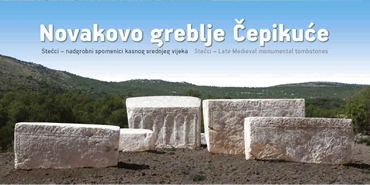Cemetery “Vlaško greblje” with stećci in Smokovljani
The settlement of Smokovljani, part of the municipality of Dubrovnik Primorje, hides the historical site (cemetery) "Vlaško greblje" with stećci (plural form of the singular stećak). Stećci are stone tombstones of the late Middle Ages (14th and 15th centuries) of the Western Balkans. Most often they mark one, but sometimes several graves. It is assumed that around 70,000 of them have been preserved in around 3,300 localities. There are 4,400 locations in Croatia, about 60,000 in Bosnia and Herzegovina, about 3,500 in Montenegro and about 4,100 in Serbia.
Although there are several types of stećci, they are mostly found in the form of slabs, gable boxes, pillars, crosses and anthropomorphic forms. They were mostly carved from limestone and are rectangular in shape with a flat or pointed top and have been found in both lying and upright positions. They were often decorated with inscriptions, simple images such as spirals, arches, stars, but also religious symbols. Moreover, a certain regularity can be observed in the arrangement of cemeteries with stećci. They are most often located next to "communications" - churches, wells and puddles, on separate mountain ridges, as well as in locations with traces of earlier human presence. Cemeteries along the mentioned communication routes are most common in the form of stone piles, various gardens of Roman necropolises, as well as cemeteries next to churches and cemeteries with stećci.
In Smokovljani, the site with stećci called "Vlaško greblje" is located approximately 70 meters east of the church of St. Vitus and Modesto with the associated stećci necropolis. A total of 4 stećci were found, one of which is a chest, and the remaining three are gables. These stećci are somewhat larger in size and mechanically quite damaged. Despite this, decorations in the form of semicircular blind arcades, friezes with vines and ropes are visible. It is assumed that the stećci at the Vlaško greblje site form a unique necropolis together with the one in front of the church of St. Vitus. At the same time, the patron saint of Smokovljani parish, St. Vitus is associated with the earliest Christian beliefs in these areas.
It should be emphasized that in 2016, the stećci sites in Croatia, Bosnia and Herzegovina, Montenegro and Serbia were declared a UNESCO World Heritage Site in Istanbul, Turkey.
Fun fact: Other names for stećci are: blizi, mramorovi, kamci, Greek, Roman or giant cemeteries, and one poet called them a petrified stoned cry.
Location
Share
























